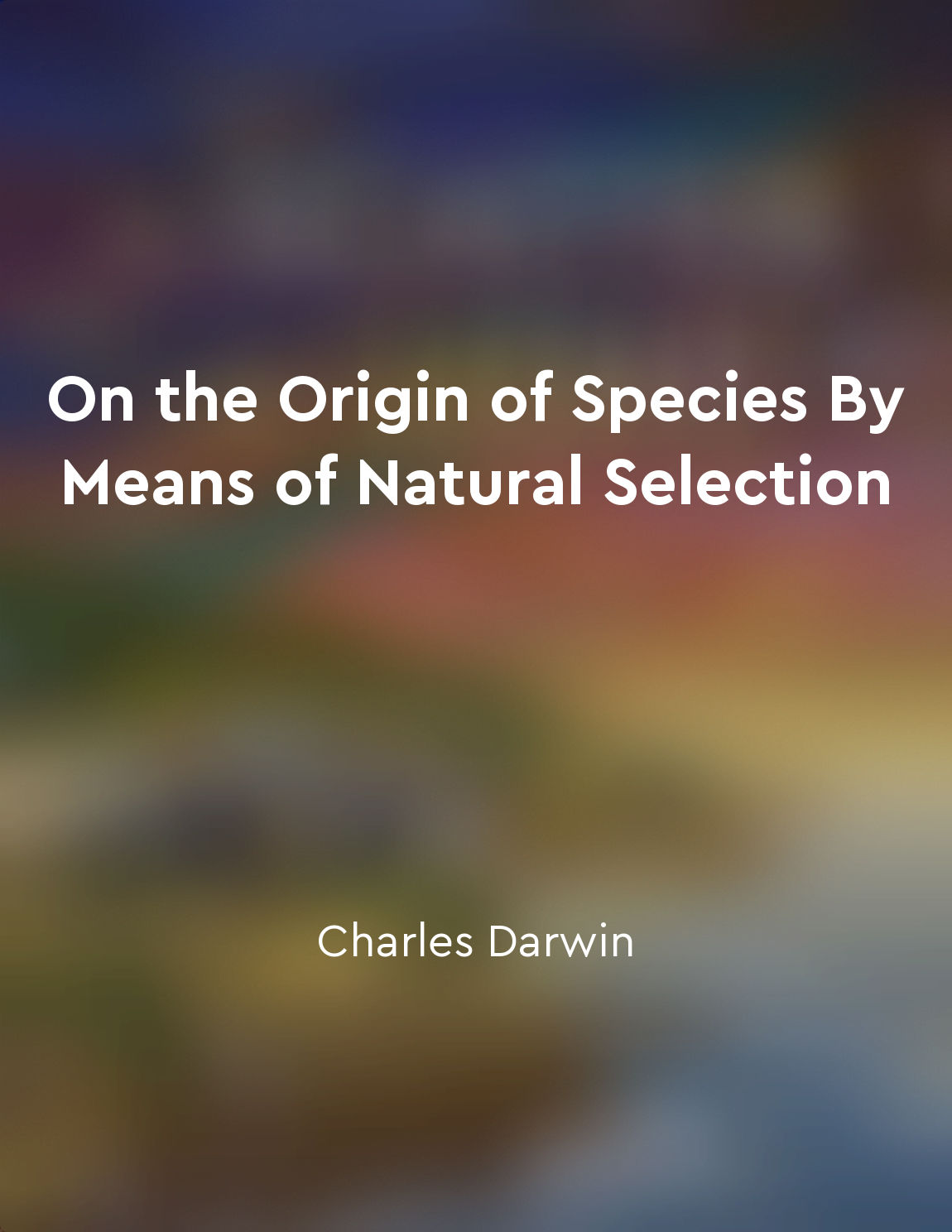Symbiotic relationships can benefit both partners from "summary" of The Red Queen by Matt Ridley
In the game of life, alliances are crucial. Organisms have evolved to form partnerships with others in order to increase their chances of survival and reproduction. Symbiotic relationships are a prime example of this strategy in action. These relationships involve two or more organisms living in close association with one another, with each partner providing some benefit to the other. The key to the success of symbiotic relationships lies in the mutual exchange of resources or services. For example, in the case of a mutualistic relationship, both partners benefit from the interaction. One classic example of mutualism is the relationship between bees and flowers. Bees benefit from the nectar provided by flowers, which they use as a food source, while flowers benefit from the pollination services provided by bees, which allows them to reproduce. Another type of symbiotic relationship is commensalism, where one partner benefits while the other is neither helped nor harmed. An example of this is the relationship between cattle egrets and grazing cattle. The egrets benefit from the insects stirred up by the cattle as they graze, while the cattle are unaffected by the presence of the birds. Even in parasitic relationships, where one partner benefits at the expense of the other, there can still be some degree of mutual benefit. Parasites may harm their hosts, but they also rely on them for survival. In some cases, parasites may even play a role in regulating host populations, which can benefit both parties in the long run.- Symbiotic relationships demonstrate the power of cooperation in the natural world. By working together, organisms can increase their chances of survival and reproduction, leading to greater overall success for both partners. In this way, symbiosis serves as a powerful example of how mutualistic interactions can drive the evolution of complex ecosystems.
Similar Posts

Gradual change over generations
The process of evolution occurs slowly and gradually over many generations. Small changes accumulate over time, eventually lead...
Building a more sustainable future
The future we seek is one that is sustainable, a future where our actions are in harmony with the earth and all its inhabitants...

Respect for all beings is important in creating a peaceful world
Respecting all living beings is a fundamental principle in building a world of harmony and peace. When we treat every creature ...
The future of pollinators depends on our willingness to take action and protect them
The fate of pollinators is intertwined with our own, as we rely on them for much of our food supply. Without their crucial role...
Life is influenced by historical processes
Life unfolds within the constraints imposed by its own historical processes. These historical processes shape both the possibil...
Education and awareness programs for promoting plant conservation in arid regions
Education and awareness programs play a crucial role in promoting plant conservation in arid regions. These programs aim to enh...
Selfinterest aligns with societal progress
The idea that self-interest aligns with societal progress is a key concept in understanding how human societies have evolved an...
Collaborate with others for optimal outcomes
To achieve success in any endeavor, it is essential to recognize the importance of working with others. Collaboration allows in...
Language facilitates human cooperation and communication
Language plays a crucial role in human cooperation and communication. Through language, individuals are able to convey their th...
Friendliness is essential for thriving communities
Friendliness is not just a nice bonus for communities; it is a key ingredient for their survival and prosperity. When individua...

